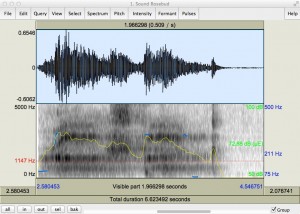I’m writing this blog post as a follow up to Nicole’s “Innovation and Education” post that she published on October 13. What I particularly liked about her approach to tackling the concept of innovation is that it’s not certainly necessary to “reinvent the wheel” but to take into account as many perspectives as possible when attempting to create something new.
Following this line of thinking, being innovative can be seen as doing something else with knowledge and processes already available to us. In turn, it stresses the idea that innovation always comes from “somewhere”. In few cases, innovative ideas emerge our of nothing. What I have found quite helpful in applying this logic of “somewhere” is to subscribe to as many online outlets that relate to your interests. In my case this meant subscribing to the various Youtube channels of the conference series known as TED. Below is a list of channel links:
TED, TED-Ed, TEDMed, TEDFellowsTalks, TEDxYouth, TEDxTalks.
For those of you who are not yet familiar with the organization, TED is a conference platform that works to share ideas worth spreading. This year marks its 20th anniversary with conference presentations that deal with a broad spectrum of topics and issues coming from the fields of technology, entertainment, art, education, business, and medicine. The organization curates most of those presentations on its various YouTube channel, thereby creating an impressive archive of information and knowledge. Tapping into this knowledge can really help generate ideas that we can consider innovative.
For example, this past summer I attended a TED conference in Berlin, Germany, where one of the presenters talked about a software application that helped visualize how TEDFellows were collaborating all over the world. The premise of the presentation was merely to show what the organization was doing and how the TEDFellows were fitting into the mix. Each fellow was represented as a colored dot and the collaboration between fellows was shown through curved colored lines that connected the dots. The size of each dot would, then, represent the extent to which each fellow would collaborate with others, i.e. the bigger the size the of dot, the more the fellow has been engaged in collaborative projects. Furthermore, a user could also select a fellow by clicking on the dot which would grey out most of the dots and lines and only leave those lines and dots colored that connected to the one selected.
I was blown away when I saw that. It made so much more sense than, let’s say, going through a traditional table layout and comparing mere numbers for each fellow with one another. With that software, the process of comparing relationships became a much more intuitive process. When I got back home, I went back to working on my research for my dissertation, and I started thinking: “There has to be a better of making sense of all the sources, concepts, and ideas that authors in my field of research are bringing to the table. And that’s when I thought back to that moment at TED, and I realized that visualizing research strands could be a very helpful way for me–and other researchers for that matter–to make sense of the huge amount of sources I am dealing with.
And so now I’m working towards finding easy accessible ways to get available software programs to do that very thing. Hopefully, this will all make its way into a workshop that I am going to give at GSU.
I will keep updating my progress regarding this project on the blog, but what the whole thing boils down to–echoing Nicole’s recent post–is that you don’t have to “reinvent the wheel” to do something innovative. Instead, what I suggest you do is to take advantage of what the Internet offers to all of us: access to a huge archive of knowledge. The TED channels I’ve linked above could serve as a great starting point. And if you find that TED actually interests you beyond advancing your knowledge, then I suggest you get in touch with TEDx organizers in your city. The are already a number of TEDx groups in the city of Atlanta, such as TEDxAtlanta and TEDxPeachtree, and also some affiliated with universities such as TEDxGeorgiaTech and TEDxEmory. Maybe it’s about time to thing about TEDxGeorgiaState?
Cheers,
Thomas
